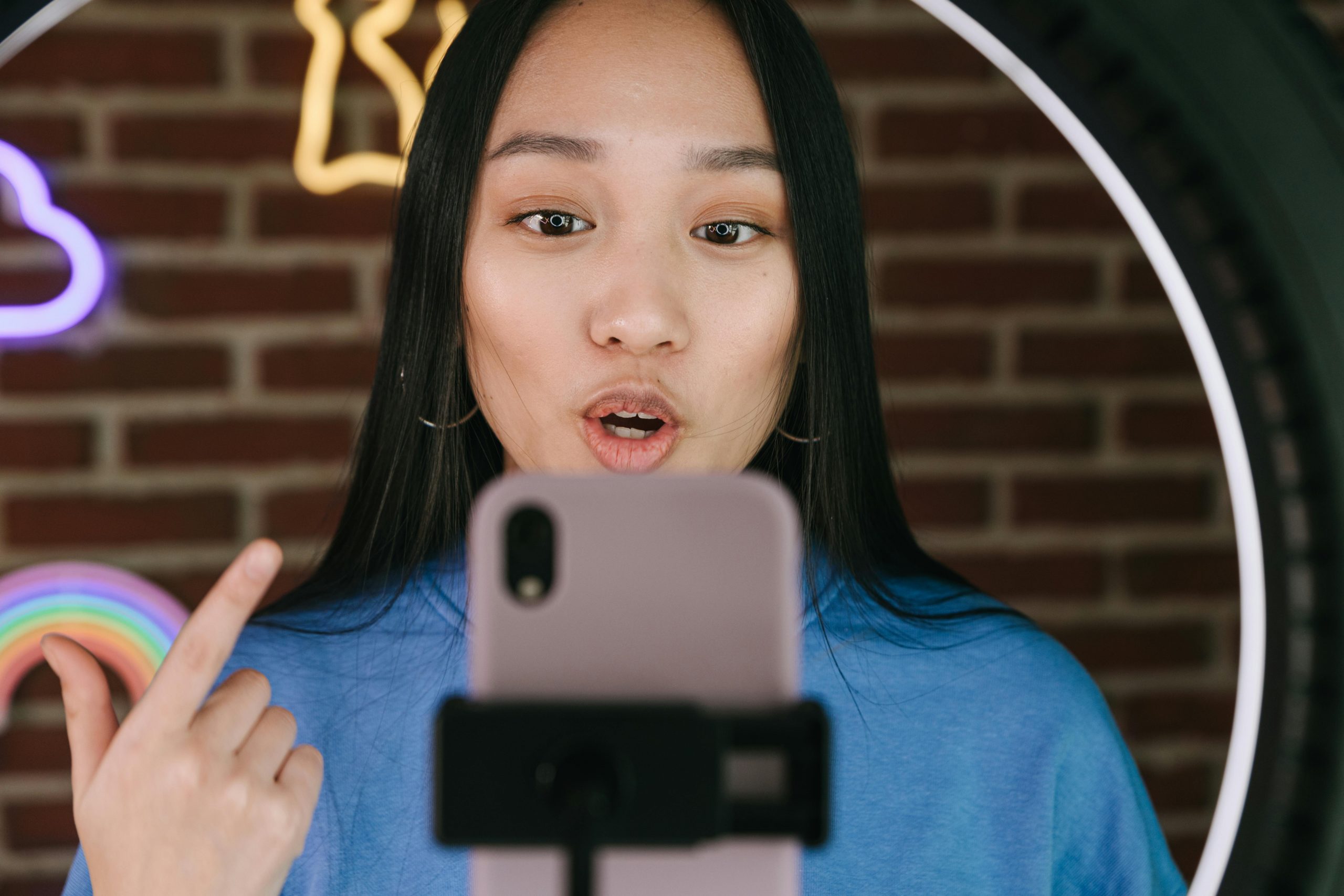In the digital era, attracting new customers is more challenging and competitive than ever. For small and medium-sized enterprises (SMEs), finding effective ways to reach potential customers without breaking the bank is a top priority. One proven and powerful tool that offers both reach and affordability is social media marketing.
In fact, it’s no surprise that 9 out of 10 small businesses integrate social media into their marketing strategies. Why? It is because social media platforms like Facebook, Instagram, LinkedIn, and TikTok allow businesses to connect directly with their audience, build trust, and drive engagement—all while leveling the playing field with bigger competitors.
This article will guide SMEs through practical, actionable steps to harness the power of social media to attract more customers. Whether you’re just getting started or looking to improve your existing efforts, you’ll find ideas that can deliver real results.
Why Is Social Media Essential for SMEs?
Before diving into the tactics, let’s understand why social media is so crucial for SMEs:
- It’s cost-effective compared to traditional advertising.
- It allows direct engagement with your audience.
- It enhances brand visibility and credibility.
- It provides insights into customer behavior and preferences.
- It levels the playing field—small businesses can compete with larger competitors by being more agile and personal.
According to a 2025 Verizon Business survey, 76% of small businesses reported a positive impact from social media marketing on their bottom line. However, the key is strategic execution, not just posting for the sake of it.
1. Define Clear Goals and Understand Your Audience
What Do You Want to Achieve?
Before launching into content creation, SMEs must define clear objectives. Consider these:
- Brand Awareness: Do you want to reach new people who haven’t heard of your business?
- Lead Generation: Are you trying to collect emails, contact details, or leads?
- Sales Growth: Is your goal to directly drive purchases from social media?
- Customer Loyalty and Engagement: Do you want to deepen your relationship with existing customers?
Clearly defining goals allows you to measure success and adjust strategies.
Who Is Your Ideal Customer?
Your content will only resonate if it’s tailored to your target audience. Create detailed buyer personas by asking:
- What age, gender, and location are my ideal customers?
- What are their interests, values, and pain points?
- What social media platforms do they use most?
- When are they active online?
- How do they prefer to consume content (videos, images, blogs)?
Tip: Use insights from your website analytics, existing customers, and competitor analysis to build an accurate audience profile.
2. Choose the Right Social Media Platforms

With so many social media options available, deciding where to focus your time and resources is critical for success. Not every platform is right for every SME, so it’s essential to prioritize the ones where your target customers are most active.
Interestingly, recent trends show that Facebook and Instagram remain the go-to platforms for small and midsize businesses. This popularity is driven by their broad user bases, advanced ad targeting options, and versatile content formats. If you’re wondering where to start, these platforms are often a smart first choice.
Here’s a breakdown of popular platforms and what they can offer your business:
Facebook:
Excellent for local businesses, event promotion, and community engagement. Its advertising tools allow precise targeting based on demographics, interests, and behaviors, which is especially useful for SMEs with limited budgets.
Instagram:
Ideal for brands with strong visual content—such as retail, food, or lifestyle sectors—and for reaching younger demographics. Instagram’s focus on visuals and short videos makes it a powerful storytelling platform.
LinkedIn:
The best fit for B2B companies, professional services, and businesses looking to build thought leadership. It’s ideal for connecting with decision-makers and sharing industry insights.
TikTok:
A rapidly growing platform known for creative, short-form videos, TikTok is a great choice for brands with a playful, youthful identity. It’s especially effective for engaging Gen Z and millennial audiences.
Twitter (now X):
While not as widely used as Facebook and Instagram, Twitter is valuable for sharing real-time updates, company news, and providing customer support. However, its reach and engagement may be more limited.
Pro Tip: Rather than trying to maintain a presence on every platform, start with one or two where your audience is most active—often Facebook or Instagram for SMEs—and expand as you gain momentum and resources.
3. Learn How to Get More Customers Using a Strong Content Strategy
What Types of Content Should You Share?
A successful social media marketing plan for SMEs doesn’t rely on just one type of content. Instead, a well-rounded content strategy ensures your audience stays engaged and interested in your brand. Let’s explore the essential content categories to include:
Educational Content:
Share value-driven materials such as tutorials, how-to guides, industry insights, and infographics. These pieces not only help your audience solve problems but also establish your brand as a credible authority in your field. For example, a home improvement SME might post short video tips on DIY fixes or home maintenance checklists.
Behind-the-Scenes Content:
Give your audience a glimpse into your business’s inner workings. Share photos or videos showcasing your company culture, staff highlights, product manufacturing process, or day-to-day operations. This human touch builds trust and fosters a deeper connection with your brand.
User-Generated Content (UGC):
Encourage your customers to share their experiences with your products or services by tagging your business or using a branded hashtag. This not only provides authentic testimonials but also expands your reach, as customers’ networks get to know your brand.
Promotional Posts:
While overly promotional content can turn off your audience, it’s important to share key product launches, limited-time discounts, flash sales, and special offers. The key is balance—ensure that promotional content doesn’t overshadow the valuable, engaging posts.
Live Streams & Stories:
Platforms like Instagram, Facebook, and TikTok offer real-time tools such as live streams and stories, which create a sense of immediacy and interaction. Use them to showcase product demos, answer FAQs, or give viewers a sneak peek of upcoming releases.
How Often Should You Post?
Consistency is the backbone of a strong social media presence. SMEs should aim for a balanced posting schedule that maintains visibility without overwhelming their resources.
Create a Content Calendar:
Planning ahead helps ensure you post consistently and cover all key content types. A content calendar outlines what to post, when to post, and on which platform—reducing last-minute scrambling and ensuring strategic alignment.
Posting Frequency:
For most SMEs, posting around 3–5 times per week per platform is a solid starting point. This frequency strikes the right balance between keeping your brand visible and not overloading your audience.
Leverage Scheduling Tools:
Platforms like Buffer, Hootsuite, or Later allow you to schedule posts in advance. This ensures you maintain a steady presence, even when your day-to-day business demands attention.
Pro Tip: Repurpose content across platforms to maximize reach without creating extra work. Just remember to tailor each piece to the platform’s format and audience expectations.
4. Collaborate with Influencers

For small and midsize businesses, influencer marketing offers a powerful way to expand reach, build credibility, and connect with niche audiences. However, it’s important to understand the different types of influencers and their cost structures so you can make informed decisions that fit your budget.
Micro-Influencers (1,000–100,000 followers):
Often praised for their high engagement rates and authentic connections with their followers, micro-influencers can be especially effective for SMEs targeting specific markets. According to a report from Influencer Marketing Hub, micro-influencers typically charge between $100 and $500 per post on Instagram and $25 and $125 per post on TikTok, making them an accessible option for businesses with moderate budgets.
Nano-Influencers (fewer than 1,000 followers):
While they have smaller audiences, nano-influencers often provide strong, personal connections with their followers, leading to higher trust and conversion rates. On Instagram, they might charge as little as $10 to $100 per post, and on TikTok, between $5 and $25 per post. This affordability makes nano-influencers a viable option for SMEs just starting with influencer marketing.
Macro-Influencers (100,000+ followers):
These influencers offer substantial reach but come with a much higher price tag—$5,000–$10,000 per Instagram post and $1,250–$2,500 per TikTok post. For most SMEs, this level of investment may only make sense for significant campaigns with a clear ROI goal.
Remember: When working with influencers, it’s essential to focus on authenticity over sheer follower numbers. An influencer who genuinely aligns with your brand values and resonates with your audience can deliver better long-term results than one with a large but disengaged following.
5. Engage Actively with Your Audience
How Can You Build Relationships?
Social media is not just a broadcasting channel; it’s a two-way conversation. To build trust and community:
- Respond promptly to comments, questions, and messages.
- Use interactive features like polls, quizzes, and Q&A sessions.
- Ask for opinions or feedback on products and services.
- Show appreciation by liking, sharing, or replying to user-generated content.
Remember: Customers are more likely to buy from brands that are approachable and responsive.
6. Leverage Paid Advertising to Expand Your Reach
While organic growth is essential, paid advertising can give your efforts a boost:
- Highly Targeted Ads: Use demographic and behavioral filters to reach your ideal audience.
- Retargeting: Show ads to people who have visited your website or engaged with your social content.
- A/B Testing: Experiment with different visuals, headlines, and calls-to-action to see what works best.
- Budget Control: Start with a small budget (even $5–$10/day) and scale up as you see positive results.
Pro Tip: Combine organic content with paid promotions for a comprehensive strategy.
7. Encourage User-Generated Content (UGC)
UGC is a powerful form of social proof that showcases real customer experiences:
- Launch contests where customers share photos or videos using your product.
- Create a branded hashtag to organize UGC and make it easy to find.
- Feature UGC prominently on your profiles and website, with proper credit.
Bonus: UGC builds a sense of community, making followers feel valued and connected.
- Monitor, Measure, and Adjust
Regularly tracking your performance ensures you’re focusing on strategies that drive results:
- Engagement Rates: Likes, comments, shares, and saves.
- Reach and Impressions: How many unique users see your content.
- Click-Through Rates (CTR): How many people click on links in your posts.
- Conversions: Sales, leads, or inquiries generated from social media interactions.
Use tools like:
- Platform-native analytics (e.g., Facebook Insights, Instagram Analytics).
- Google Analytics to track social media referral traffic.
- Third-party tools (e.g., Sprout Social, Hootsuite) for detailed reporting.
Pro Tip: Analyze performance monthly and tweak your content, posting times, and formats accordingly.
9. Stay Up-to-Date with Social Media Trends
Social media platforms constantly evolve, introducing new features and changing algorithms. To stay relevant:
- Follow industry news and social media blogs.
- Experiment with new formats like Instagram Reels, TikTok videos, or LinkedIn newsletters.
- Be aware of cultural and seasonal trends that resonate with your audience.
Tip: Try platform features early—early adopters often see better reach!
- Provide Outstanding Customer Service
Social media is often the first point of contact for customer inquiries. Fast, helpful responses can turn inquiries into sales:
- Use messaging features for prompt customer support.
- Set up auto-replies for FAQs but follow up with a personal response.
- Publicly resolve complaints to demonstrate transparency.
Pro Tip: Happy customers often share their positive experiences, generating valuable word-of-mouth referrals.
Take Action Today
For SMEs looking to grow their customer base, social media marketing isn’t just an option—it’s a necessity. By understanding your audience, choosing the right platforms, creating engaging content, and building authentic connections, you can turn followers into loyal customers. Remember, success comes from consistency, creativity, and a willingness to adapt. Start today, and watch your customer base grow.


